Miro OKR Planning Template
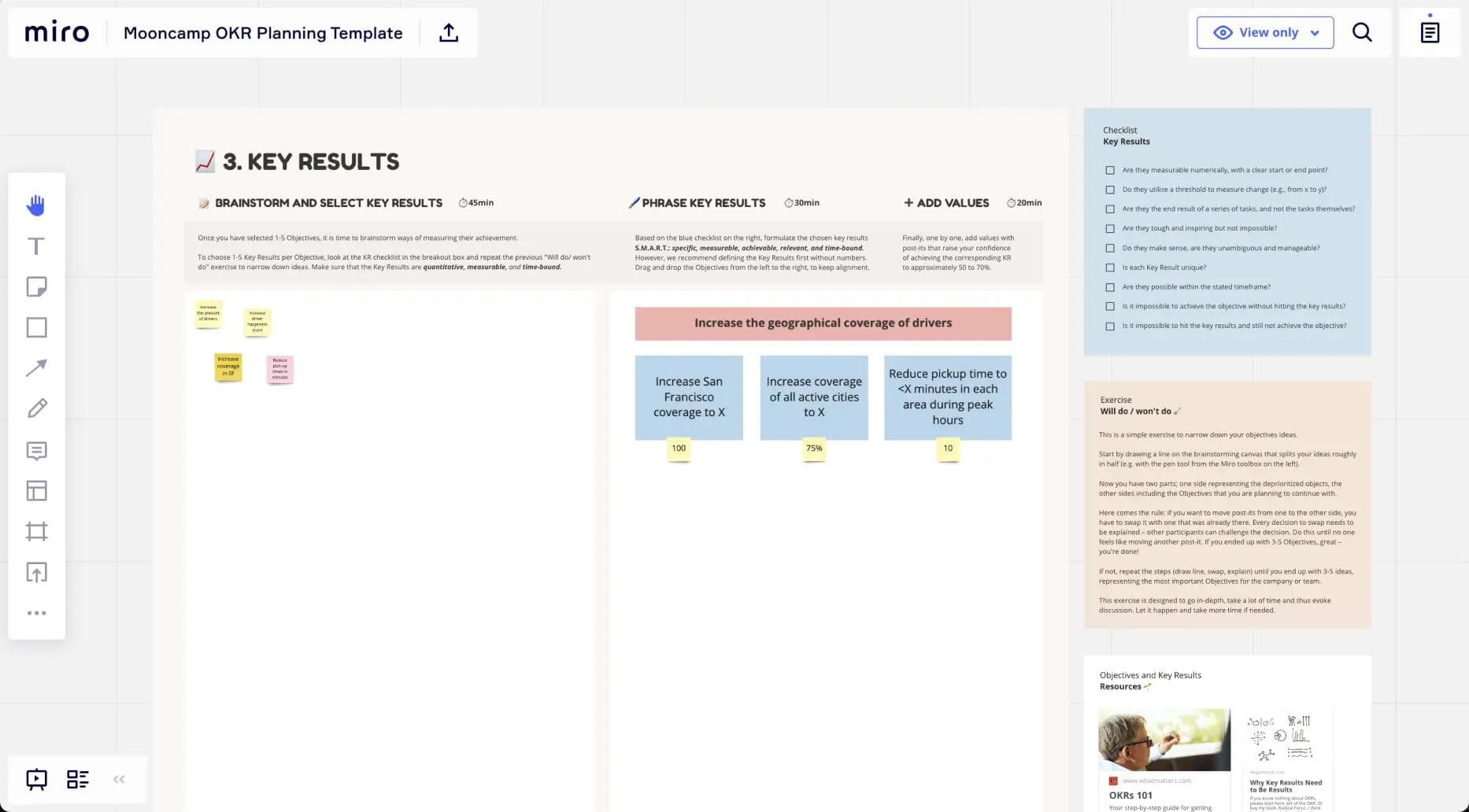
Creating OKRs can be tedious, but it doesn't have to be!
Every company is unique in its own way: and so are their OKRs. We think that developing OKRs should be straightforward, simple and personalizable. One option is to hire an OKR consultant to guide you through the development process. The much cheaper and more personalized option is a workshop organized independently using this OKR Planning Template in Miro.
The remote workshop with Miro can be used at the corporate and team level. In addition to inspirational resources, it also contains various exercises and checklists that can be of great help in the development of individual OKRs. A detailed list of the contents, as well as a step-by-step guide of the Miro OKR template can be found further down in this article.
What are Objectives & Key Results?
Objectives and Key Results are an agile framework that helps organizations better set goals and avoid getting lost along the way. Used professionally, the OKR methodology can lead to greater transparency, clearer alignment, more focus, and better agility for an organization. Objectives are "non-measurable" but inspirational goals that describe the long-term success of the organization. Key Results serve as results-oriented checkpoints.
The OKR method originated at Intel in the 1970s and became known to a wider audience through its application at successful tech companies such as Google, LinkedIn, Spotify, and Slack. Today, OKRs are used by teams and organizations of all sizes.
You can learn more about OKRs in our OKR Guide.
What is included in the Miro OKR template
- Workshop preparation and agenda
- A mission statement exercise
- Suggestions for icebreaker games
- Exercises for brainstorming and selecting OKRs.
- Checklists for defining and formulating OKRs
- OKR tree diagram canvas
- Further resources
How to use the Miro OKR planning template
1. Access the template
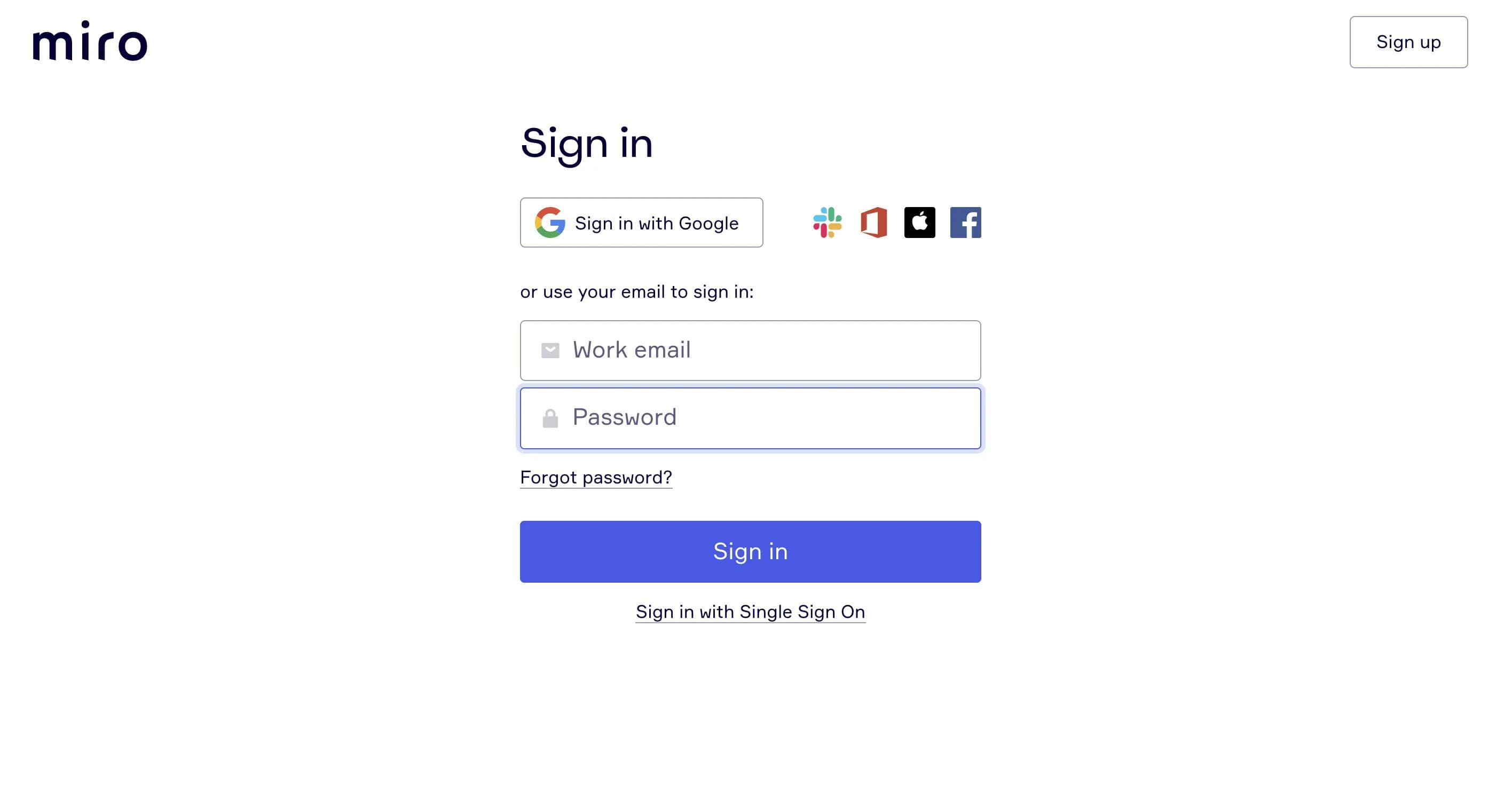
Click here to open the template in Miro.
To use the template, an account with Miro is required. While it is possible to add external users to the template, they will not be able to edit the board until a premium membership is purchased.
Tip: We recommend appointing a facilitator:in to prepare and run the workshop. This person should make sure in advance that all participants:in have access to the template and are informed about the location, time and also already about the concept of OKRs.
2. Sharing the Miro OKR Planning Workshop
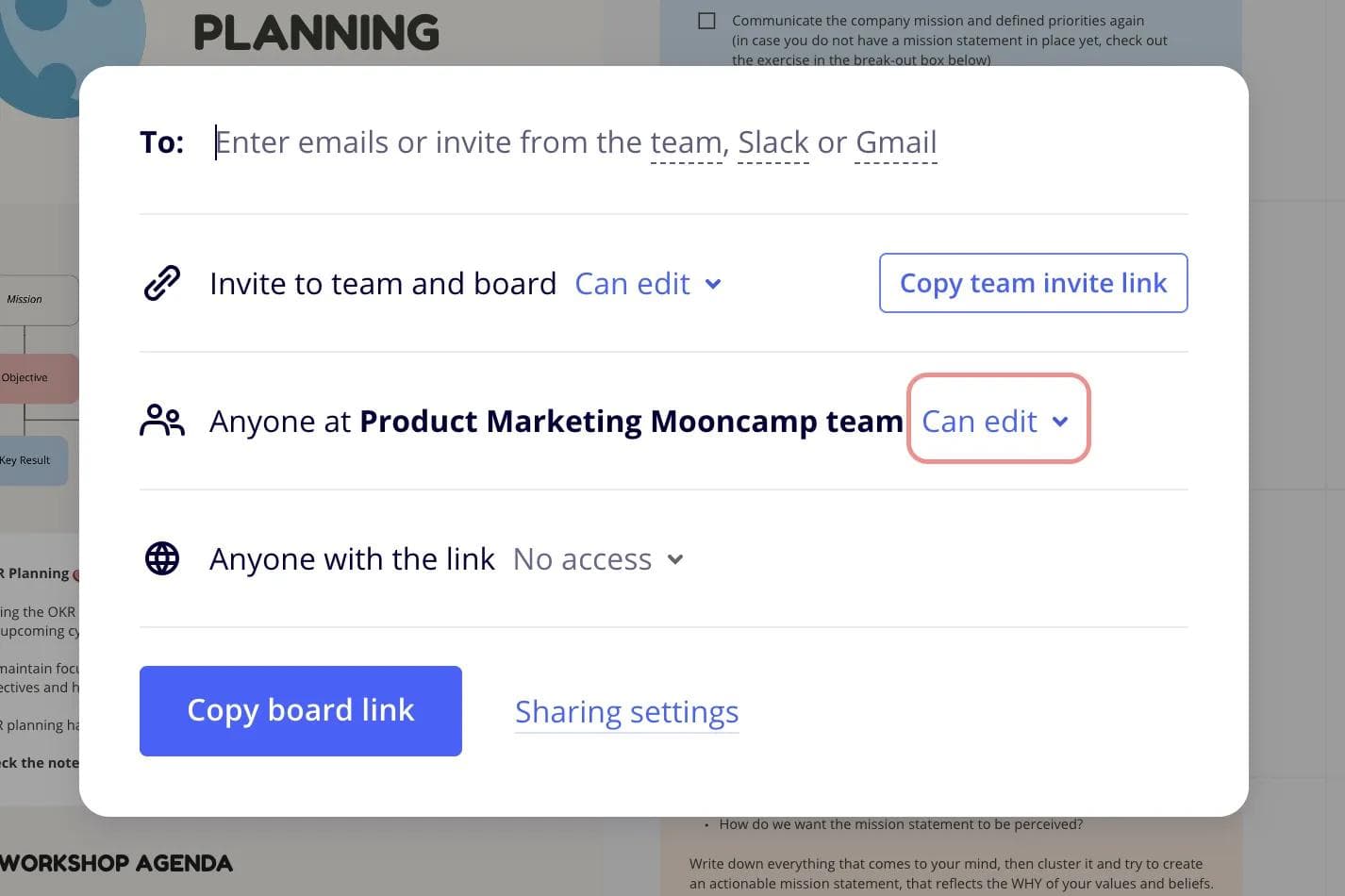
Once you have access to the Miro board, you can share it with participant:s by sending an invitation via email or using the board link.
Alternatively, anyone previously added as a team member in the admin console will automatically be given access to the Miro template. To ensure full access for all participants, the access permissions must be set to "Edit".
Tip: If you do not have a premium account with Miro, it is unfortunately not possible to give full editing rights to external participants.
3. Preparing the session
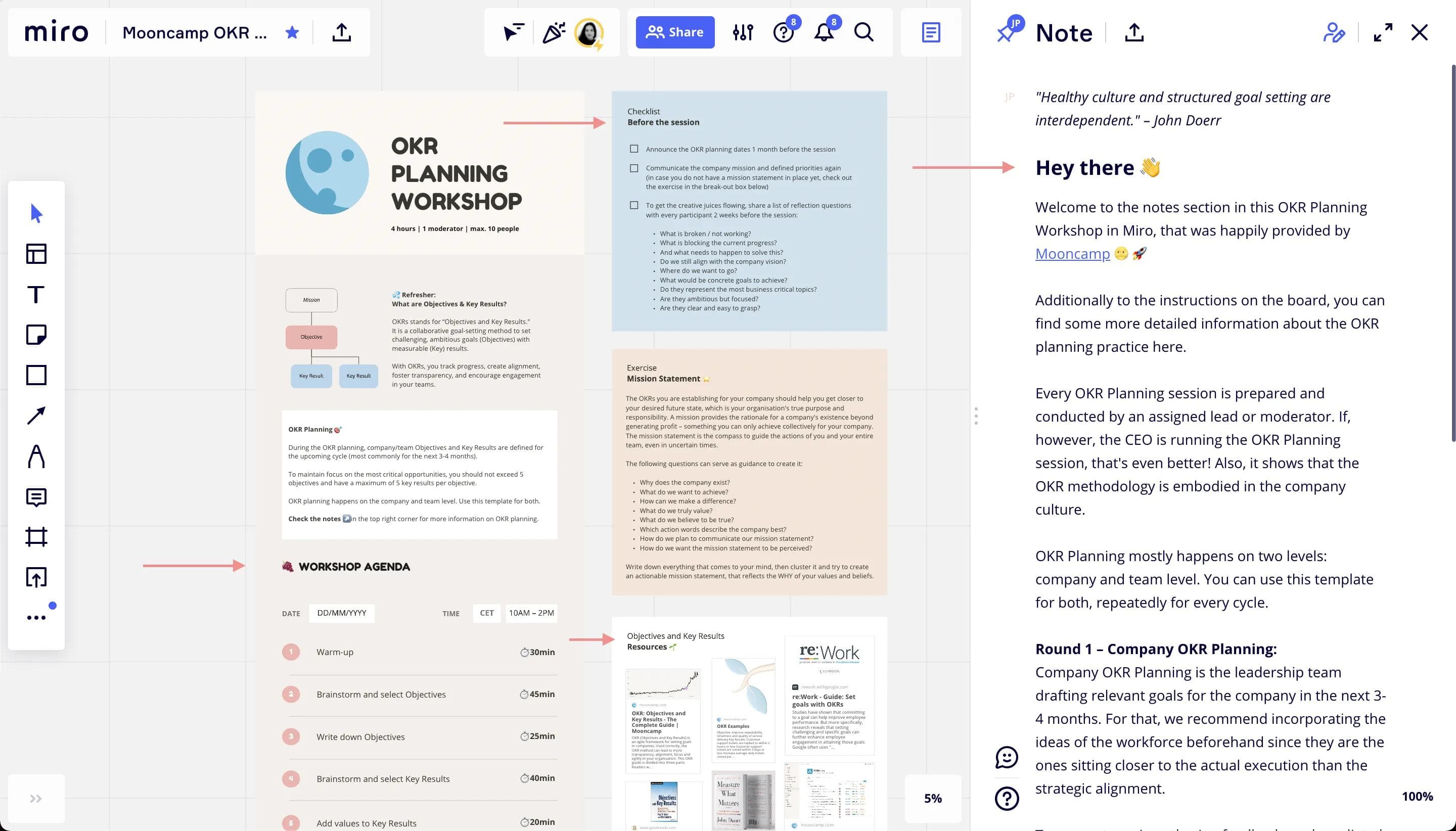
The preparation of a workshop is essential to its success. How to do this with the Miro workshop can be found on canvas number one and in the Miro Notes. The date and time, including the appropriate time zone, should be set as early as possible and communicated to all participants. The agenda can also be adjusted if necessary. However, it is important that at least three to four hours are invested in workshop planning to allow sufficient time for in-depth discussions.
Tip: Participants should be told in advance exactly what to expect in the workshop. The blue break-out box contains a checklist of key points.
4. Mission statement exercise (optional)
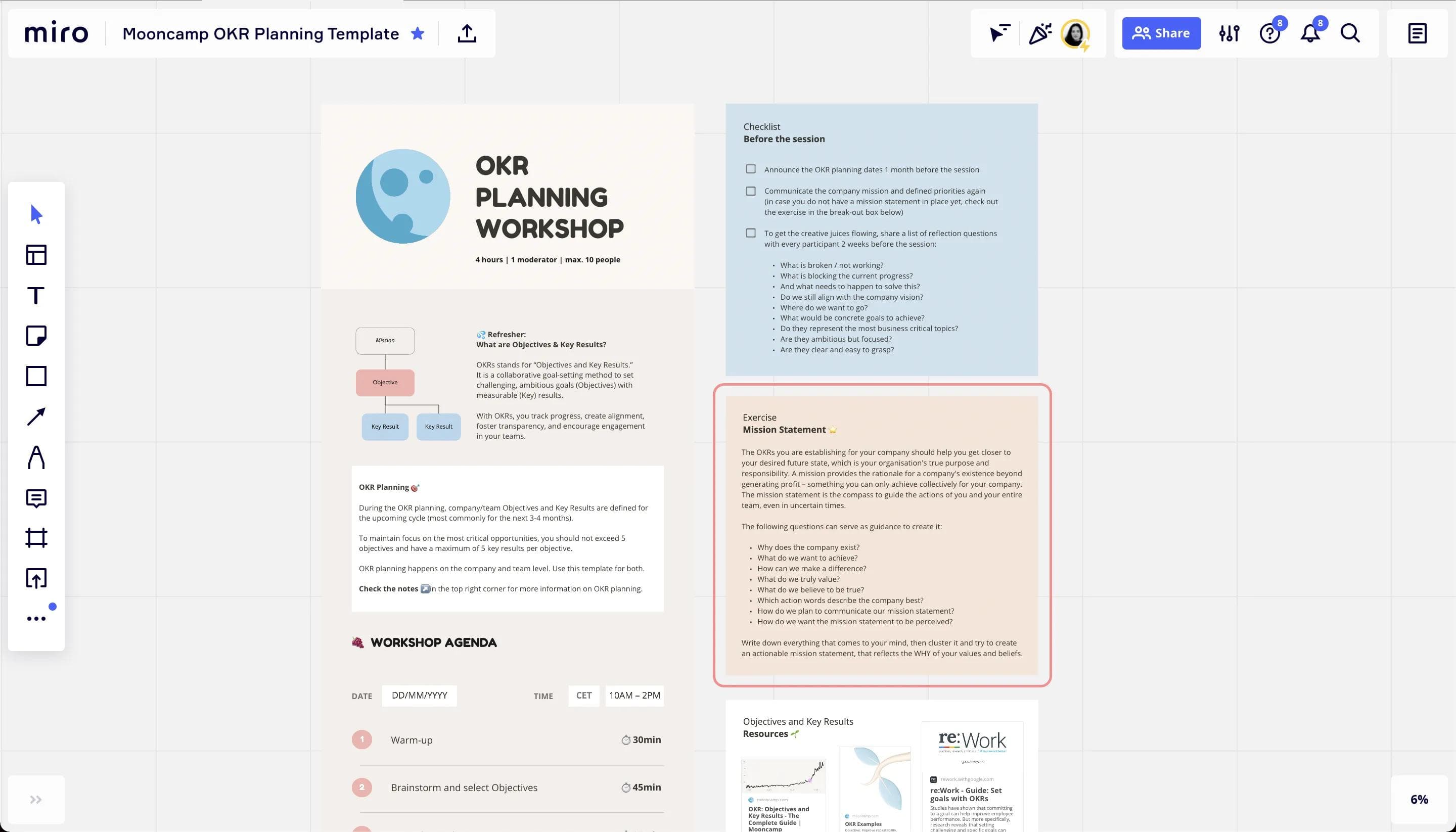
OKRs work much better when everyone in the organization is clear about the mission. The mission statement uses internal values and beliefs to describe how the long-term mission will be achieved.
There is an exercise in the break-out box that helps define a mission statement.
Tip: Once a year, the mission - including all values and beliefs - should be reflected upon.
5. Introduction and warm-up
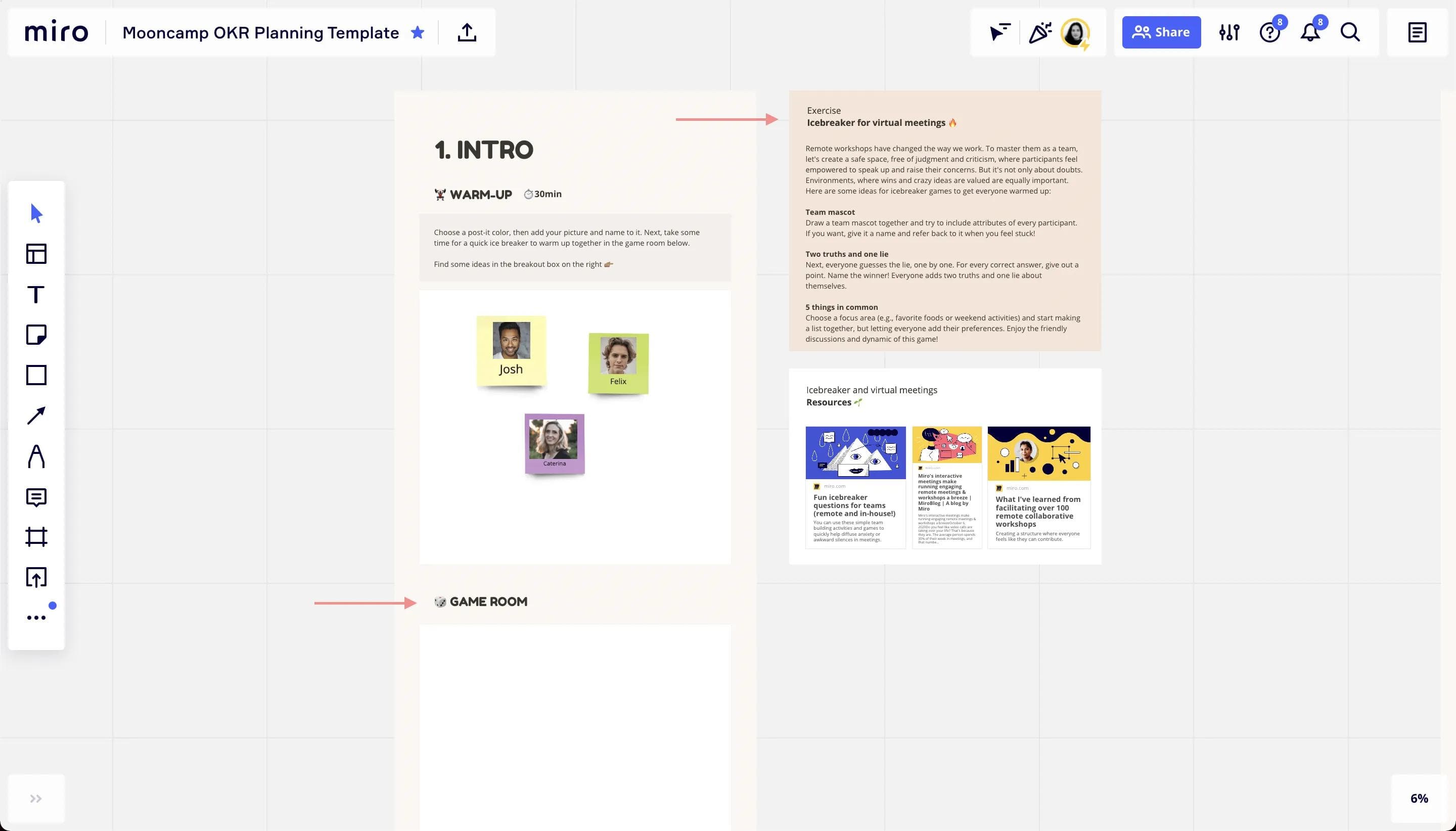
The first part of the workshop, the intro, is intended to create a safe space for in-depth conversations. It begins when all participants have read and understood the introductory instructions. This applies to all steps of the workshop.
30 to 45 minutes should be sufficient to prepare the participants for the workshop through a casual round of introductions and a short icebreaker game. First, everyone meets in the open space at the top of the intro canvas and chooses a color for their sticky note. Each participant keeps that color throughout the course of the workshop so that appropriate responses or comments can be associated with them. In the "game room" located below the intro, there is enough space to express yourself creatively during the icebreaker games. For this purpose, the tools from the Miro toolbox, which can be found on the left, can be used. In the breakout boxes on the right are suggestions for more advanced icebreaker games.
Tip: A dynamically designed agenda allows you to devote more or less time to individual parts of the workshop as needed. Breaks can be mutually agreed upon at the beginning or simply taken by the participants as needed.
6. Brainstorming and formulating Objectives
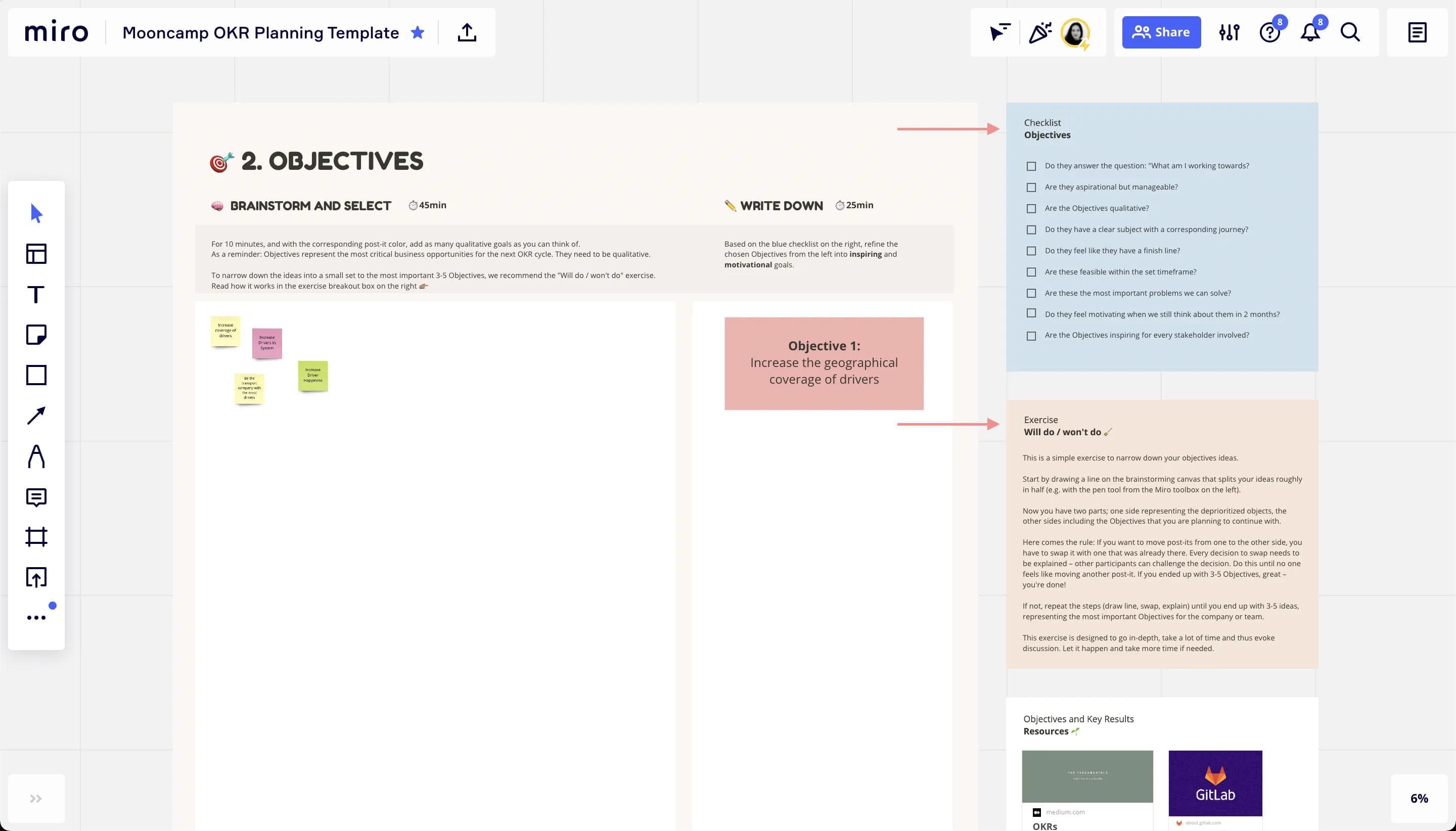
The main part of the workshop starts with a brainstorming session and the formulation of objectives. At least one hour should be allocated for this.
After everyone has familiarized themselves with the instructions, ideas are collected in a brainstorming session. For inspiration, you will find a few examples of objectives there. To identify the right objectives, the exercise "Will do/ won't do" can help to select. This is described in detail in the breakout box. At the end you should be able to check off each item on the Objective checklist.
Tip: Only move forward to the next step if every participant agrees with the Objectives, as they are the foundation for the creation of your Key Results in the next step.
7. Brainstorming and defining Key Results
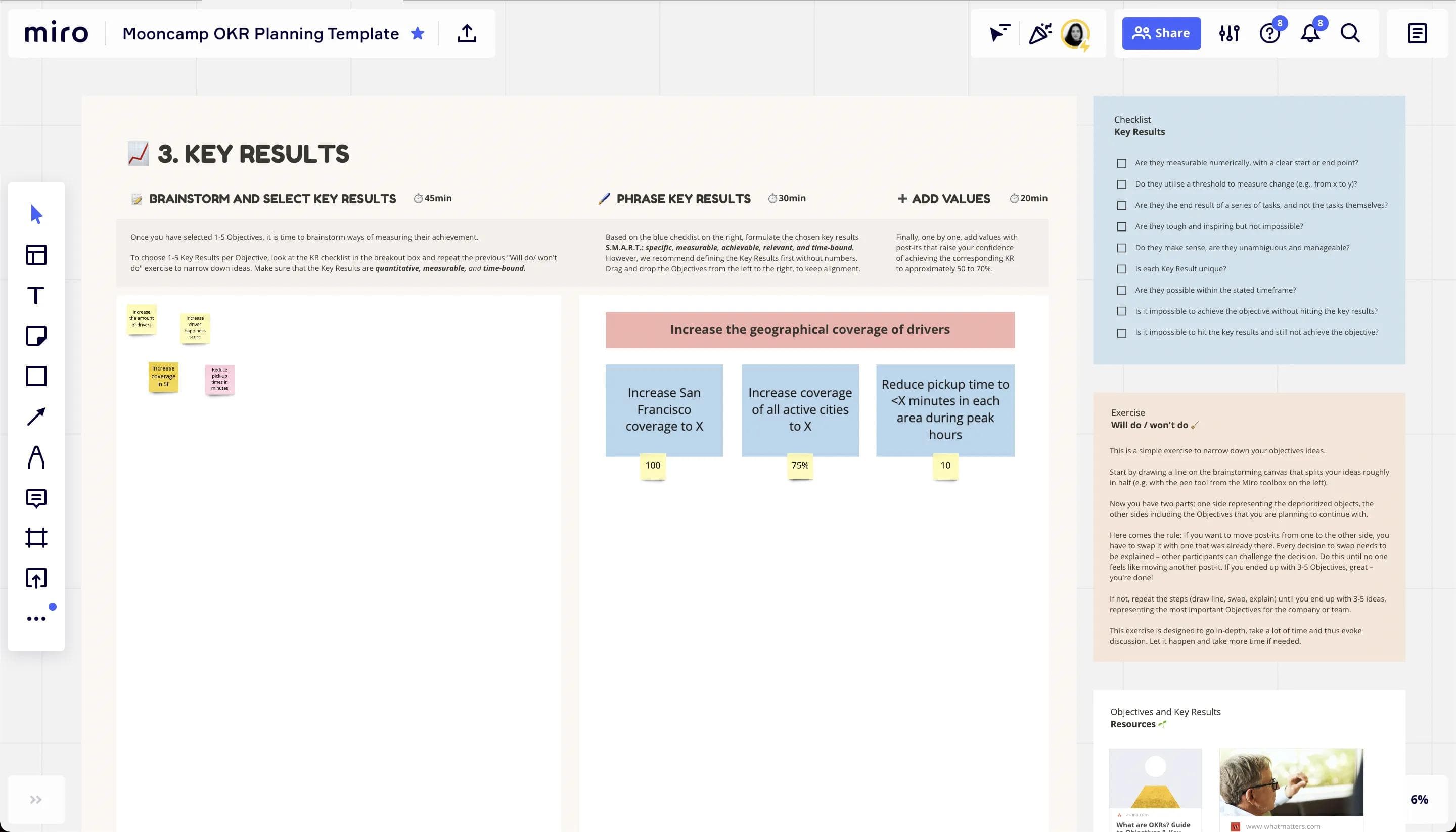
The Objectives defined in the previous step will serve as the basis for the Key Results defined in this step. At least 1.5 hours should be allocated.
The process here is very similar to that of Objective formulation. The space on the left side of the canvas is used for brainstorming and selecting Key Results. There are also a few examples there for inspiration. The checklist (blue breakout box) lists a few key points that should be considered.
After the ideas have been collected together, the group derives 1-5 Key Results per Objective from them. The emphasis does not have to be on numerical values at the beginning. Rather, it is important that the Key Results are "S.M.A.R.T." (specific, measurable, achievable, relevant, time-bound). When everyone agrees that this requirement has been met, target values can be set together.
Tip: Key Results should look at progress toward achieving an Objective from multiple angles. Five Key Results that all have the same perspective on the Objective are less useful than a well-balanced set.
8. Filling in the OKRs tree overview
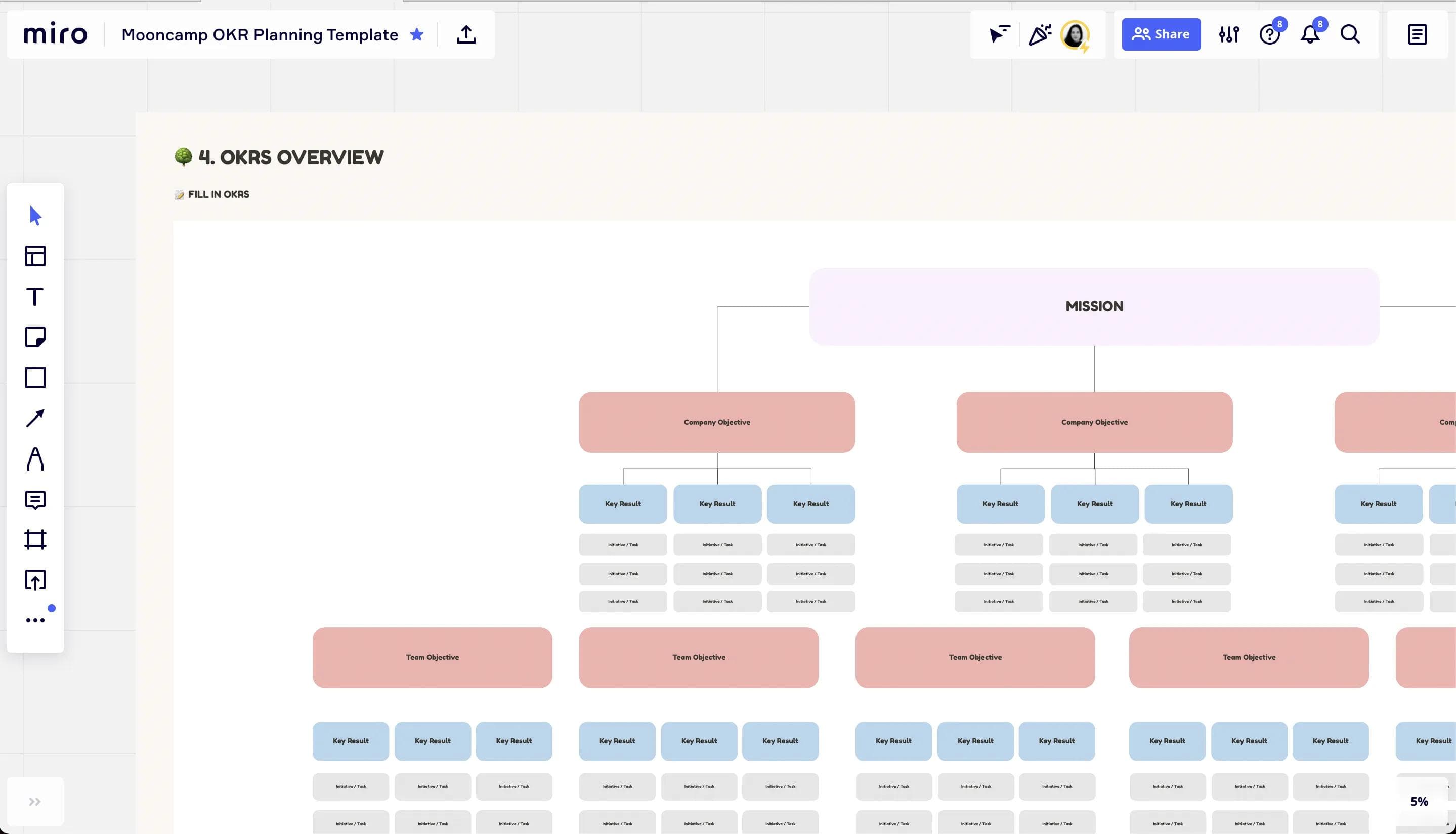
The last step of the workshop consists of working with the presented OKR tree diagram. If there is still time and motivation, additional initiatives or tasks can of course be added. Once the tree chart has been filled, it should be shared with the team. This can be done either digitally or as a printout directly in the office. Or both. If you are using an OKR tracking template, or if software is in place, the OKRs should be transferred directly to it.
Don't have an OKR tracking template yet? Then have a look at our Google Sheet. Or perhaps you want to go one step further? Then maybe take a look at the OKR software from Mooncamp.
